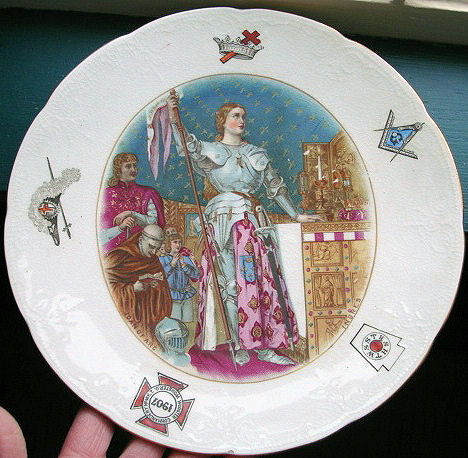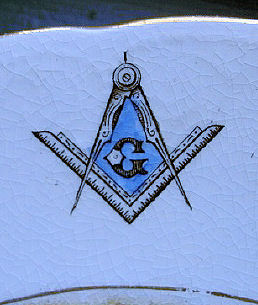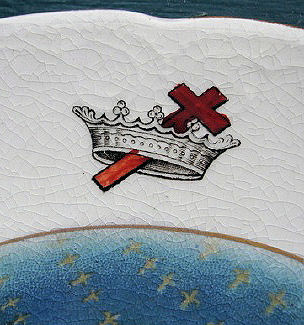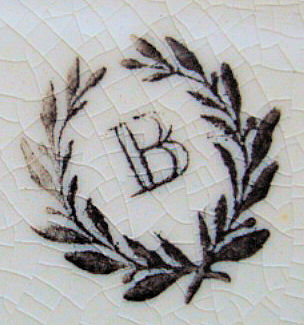1907 Wooster
Commandery No. 48 K.T. Plate
depicting
Joan of Arc








In the center of this beautiful 8
5/8" plate is a colorful picture of Joan of Arc by artist Ingres. Around the
border are different symbols representing Masonic Bodies, including the Royal
Arch. The Maltese cross also says "Wooster Commandery No. 48 K.T. Wooster,
O". It was made by Bennett Pottery.
About Joan
of Arc
Joan of Arc, also known
as Jeanne d'Arc, (c.1412 – 30 May 1431) was a national heroine of
France and is now a saint of the Roman Catholic Church. She asserted that she
had visions from God which told her to recover her homeland from English
domination late in the Hundred Years' War. The uncrowned King Charles VII sent
her to the siege at Orléans as part of a relief mission. She gained prominence
when she overcame the light regard of veteran commanders and lifted the siege
in only nine days. Several more swift victories led to Charles VII's
coronation at Reims and settled the disputed succession to the throne.
The renewed French confidence
outlasted her own brief career. She refused to leave the field when she was
wounded during an attempt to recapture Paris that autumn. Hampered by court
intrigues, she led only minor companies from then onward and fell prisoner at a
skirmish near Compiègne the following spring. A politically motivated trial
convicted her of heresy. The English regent John of Lancaster, 1st Duke of
Bedford had her burnt at the stake in Rouen. She had been the heroine of her
country at the age of seventeen and died at just nineteen. Some twenty-four
years later Pope Callixtus III reopened the case and a new finding overturned
the original conviction. Her piety to the end impressed the retrial court. Pope
Benedict XV canonized her on 16 May 1920.
She has remained an important
figure in Western culture and many other nations. From Napoleon to the present,
French politicians of all leanings have invoked her memory. Major writers and
composers who have created works about her include Shakespeare, Voltaire,
Schiller, Verdi, Tchaikovsky, Twain, Shaw, Brecht, and Honegger. Depictions of
her continue in film, television, and song.

